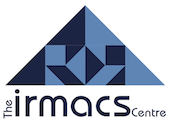Ancient Metals in Advanced Materials: Cyanide-based Coordination Polymers
The rational increase of structural dimensionality is an important synthetic goal in supramolecular systems. The Leznoff group has been incorporating paramagnetic and diamagnetic metals and non-octahedral cyanometallates into polymers, targeting magnetic, vapochromic, birefringent, luminescent, high dielectric, negative-thermal expansion and other properties. In particular, neglected linear d10 [M(CN)2]- building blocks (M=Au,Ag) have been targeted to take advantage of attractive metallophilic interactions to increase structural dimensionality. Several property-based vignettes from this work will be presented in this lecture. For example, simple "mineral-like" cyanoaurate(I)-based polymers of the form M[Au(CN)2]2(H2O)x with unusual magnetic and vapochromic properties (M=Cu-Mn) will be profiled. The use of luminescent Zn[Au(CN)2]2 as an ammonia sensor and methods to prepare thin-films of this insoluble material will be discussed. As a comparison with the linear [Au(CN)2]- unit, coordination polymers with the square-planar d8 [Au(CN)2Br2]- building blocks and their rare reductive elimination properties will also be described. The use of these soluble Au(III)-based polymers as photolithography substrates will be described, thereby opening a new route to processibility of coordination polymers for materials applications. A new direction in our lab (funded by the NSERC-DAS), targeting redox-active metal-phthalocyanine materials, will briefly be outlined.
Refs: Chem. Soc. Rev., 2008, 37, 1884; J. Am. Chem. Soc., 2008, 130, 10662; Inorg. Chem., 2010, 49, 9609; Dalton Trans., 2011, 40, 4140; Chem. Eur. J., 2012, 12404.


